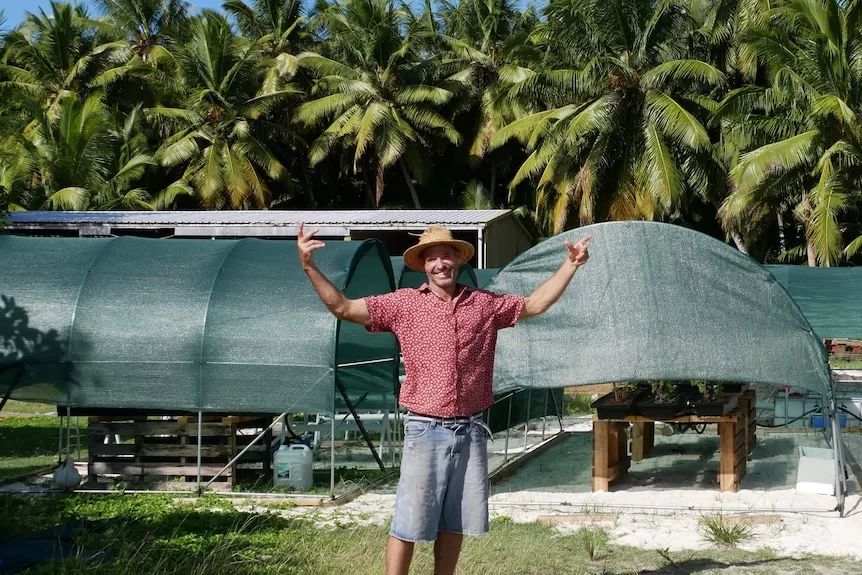The smell of sourdough bread baking in the oven is one of the first things you can smell when you arrive at the airport in the Cocos (Keeling) Islands — Australia’s most remote territory.
The bread is so good that people order ahead and stock up on the crusty loaves on their way to Christmas Island, almost 1,000 kilometres away.
The sourdough is the brainchild of long-term Cocos resident Tony Lacy.
It is made with sea salt from the clear waters of the Indian Ocean that surrounds the coral atoll – 3,000km north of Perth.
“It gets back to that simple thing in life; efforts of sourdough bread and salt, water and flour,” he said.
“I mean, how amazing is that to bring a smile to someone’s face while eating sourdough on a tropical island that the closest place to us is Madagascar way, way to the west.”
Making sea salt
Tony’s family of six moved to Cocos for his wife’s job as a ranger. He spent the early days as a house dad to their four boys.
“When they all went to school, I was happy doing nothing, but the wife says, ‘Well, what are you doing’,” he said.
“I said, ‘I’m just watching the waves come in’.”
Tony kissed goodbye to his days staring out to sea and decided to utilise his skills in food science in the remote location.
Although Cocos is spoilt with physical beauty, fresh food [other than fish and coconuts] is in short supply, with very little fresh vegetables or fruit grown locally.
Tony decided to harness the island’s abundance of sun and seawater to create sea salt, working under the guidance of the Cocos elders living on Home Island.
“I met our seniors and elders over on Home Island who was making sea salt using the traditional method, which is boiling up seawater in a 44-gallon drum using coconut husks as the fuel,” he said.
They’ve since refined the process, and evaporate the seawater by placing panels of glass on large food-safe tubs to harness the sun and draw out the salt.
“We had some seed funding and we had about 400 of these on Home Island,” Tony said.
“The seniors were amazed that purely using the sun’s energy we could solar evaporate and so that’s just morphed into so many so many things.”
Sourdough, pizza, coconuts and ice cream
Sourdough was the next logical step for Tony.
“I mean sea salt tasting for tourists isn’t as exciting as beer, or wine, or gin tasting or cheese tasting,” he said.
“So we thought, ‘Well, OK, why don’t we make some food products from our core ingredient’.
“And we started making pizzas on a Sunday night.”
What started with sea salt has grown into several cottage industries, including the bakery, pizzeria, nano-brewery and two cafes.
They employ 10 people, mostly from Home Island.
“The sea salt goes into our sourdough bread, and we use a pinch of it for our ice creams,” Tony said.
“I started playing around with coconuts and through the extraction process we extracted the desiccated coconut and then pressed it to make coconut cream and with the cream, we convert that to ice cream. Yeah, we’ve got four different flavours.
“We use the salt for our pasta as well.”
Living remotely
Fresh food is expensive on Cocos Island with a lettuce costing as much as $8 in the local shop.
Air freight comes in twice a week and a ship comes in every sixth week, depending on weather, with the bulk grocery delivery.
A federal government innovative grant is helping establish a hydroponics system on West Island so islanders can grow their own greens.
Despite the difficulties living so remotely in the Indian Ocean Territories, Tony would not bring his kids up anywhere else.
“It’s like mainland Australia, perhaps 50 years ago, where you don’t have to worry where the kids are,” he said.
“They go out and find their own entertainment, whether it’s on a beach, low-tide or high-tide activities.
“You just don’t worry, they come home when they’re hungry.”
